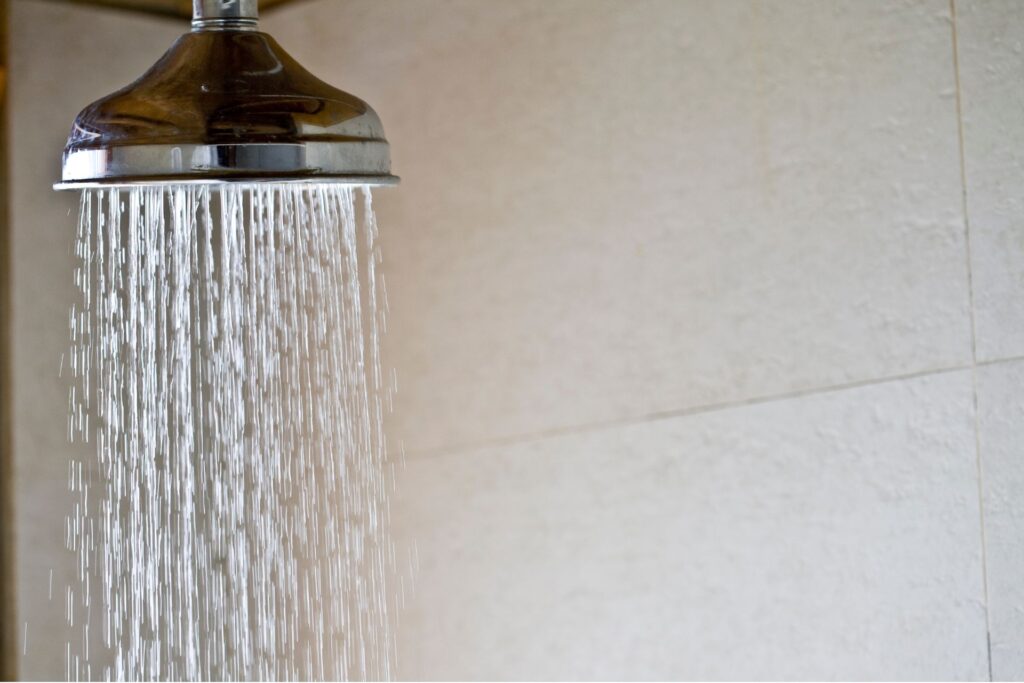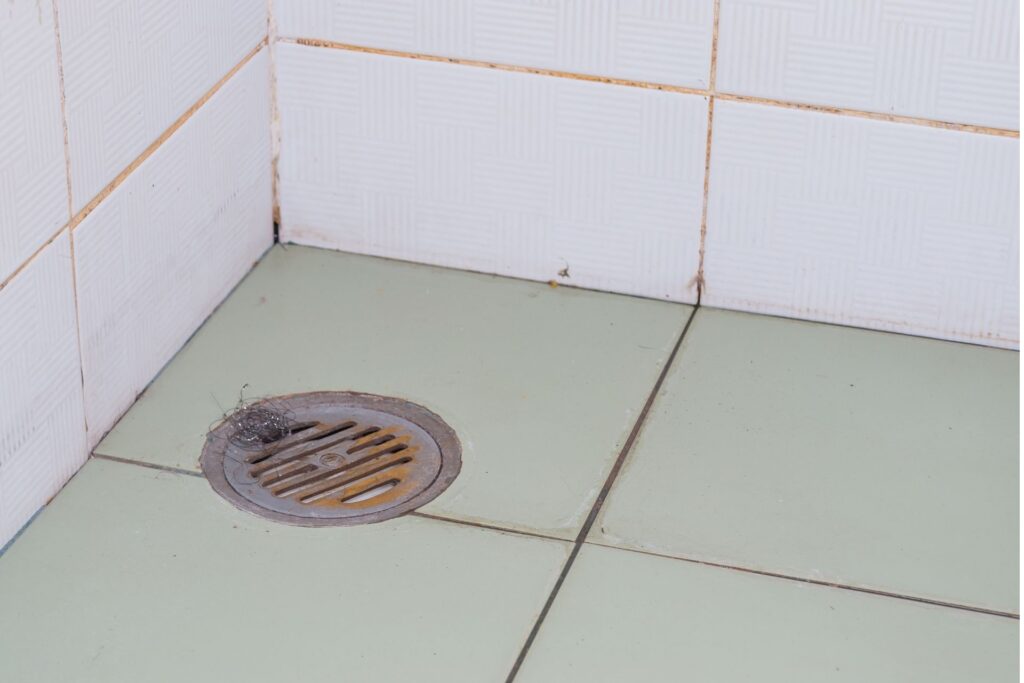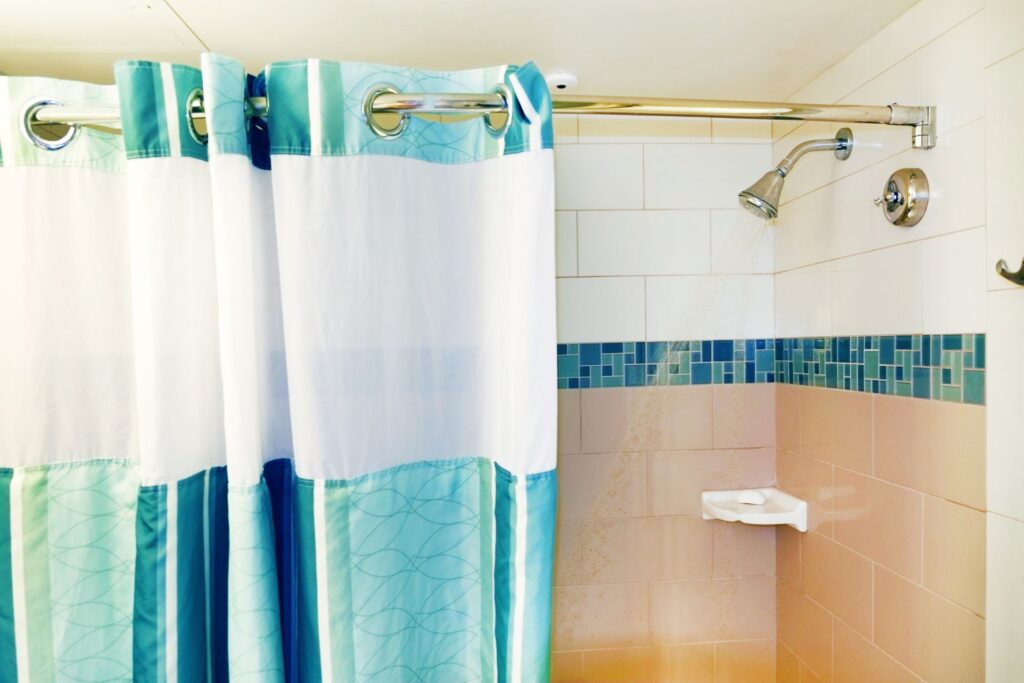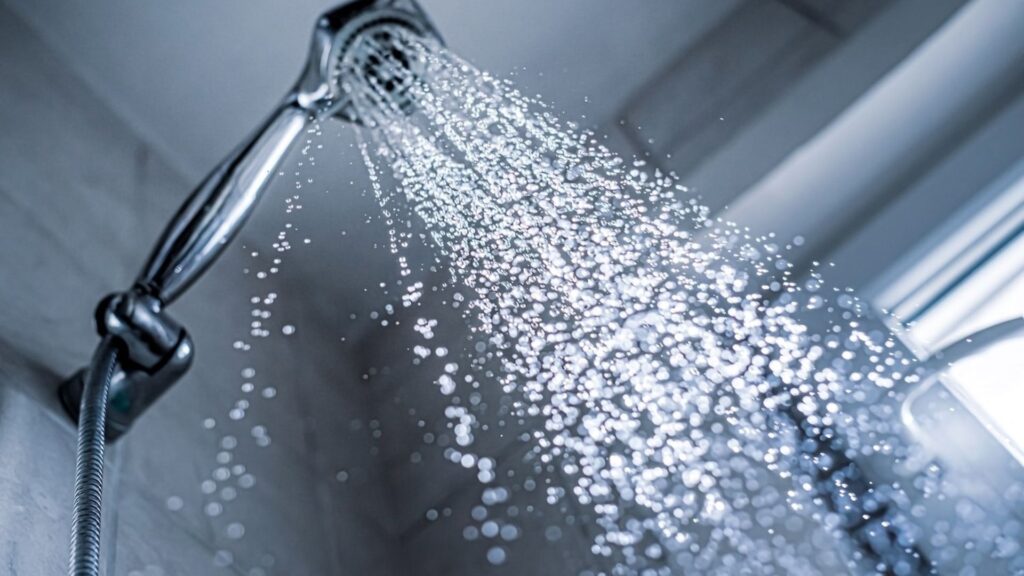Welcome to our ultimate guide on boosting your shower’s water pressure! There’s nothing more frustrating than stepping into the shower, hoping for a refreshing start or end to your day, only to be met with a weak trickle that barely gets the job done. Whether it’s taking forever to rinse off soap or simply not feeling the invigorating force of water you desire, low water pressure in the shower is a common annoyance that many face. But fear not, because help is at hand! In this comprehensive guide, we’ll walk you through the ins and outs of water pressure, pinpoint the likely culprits behind the dribble, and provide you with actionable solutions that promise to transform your shower experience from dismal to delightful. Let’s dive into how you can turn that drizzle into a powerful cascade, ensuring every shower you take is nothing short of spectacular.
To increase the water pressure in your shower, start by checking for and cleaning any mineral deposits from the showerhead. If this doesn’t improve pressure, ensure all water valves (main and shower) are fully open. Consider replacing the showerhead with a high-pressure model or check for plumbing leaks. For a more significant boost, a water pressure booster pump might be necessary. Regular maintenance, like monitoring for leaks and descaling the showerhead, can prevent future pressure issues.
- Understanding Water Pressure
- Signs Of Low Water Pressure In Your Shower
- Common Culprits Behind Low Water Pressure In Showers
- DIY Solutions To Increase Shower Water Pressure
- When To Call A Professional
- Preventing Future Water Pressure Issues
- FAQs: About How To Increase The Water Pressure Of Your Shower
- Conclusion
- Find A Professional Plumbing Company Near You
Understanding Water Pressure
Water pressure is a crucial aspect of any residential plumbing system, influencing everything from the efficiency of your showers to the reliability of your appliances. Understanding water pressure, how it’s measured, and the factors affecting it can help homeowners diagnose issues, improve their systems, and ensure a consistent supply of water for their daily needs. This guide delves into the intricacies of water pressure, offering insights that could enhance your home living experience.
What is Water Pressure?
At its core, water pressure is the force that moves water through your home’s plumbing system. It’s what ensures that water reaches all parts of your house, from the upper floors to your garden hose. This force is created by the weight of water itself, which is pushed through pipes by gravity or mechanical pumps. Water pressure is typically measured in pounds per square inch (PSI), with a standard gauge or a digital meter used to determine the exact pressure in your plumbing system.
Standard Water Pressure Range for Residential Homes
For most residential settings, a water pressure range of 40 to 60 PSI is considered ideal. This range ensures that water flows smoothly from taps, showers, and appliances, without being too forceful or too weak. Water pressure that falls outside this range can lead to various issues. High pressure, for example, can cause undue stress on your pipes and fixtures, leading to leaks or damage. On the other hand, low pressure can make daily tasks like showering or filling the kettle frustratingly slow.
Factors That Affect Water Pressure in Your Home
Several factors can influence the water pressure in your home, some of which are within your control, while others may require professional intervention. These factors include:
Elevation: Water naturally flows downwards, so homes at higher elevations may experience lower pressure.
Pipe size and condition: Narrow or corroded pipes can restrict water flow, reducing pressure. Regular maintenance can help identify and rectify such issues.
Water source and supply: The distance from your home to the municipal water supply or the condition of your well can affect pressure. In urban settings, peak usage times can also lead to fluctuations in pressure.
Regulatory devices: Pressure regulators and valves installed to protect your plumbing system can sometimes fail or be improperly adjusted, leading to changes in water pressure.
Understanding these factors can empower homeowners to take proactive steps in managing their water pressure. Regular checks, maintenance, and consultations with plumbing professionals can ensure that your home enjoys a consistent and adequate water supply.
By addressing the complexity of water pressure in an accessible manner, this guide aims to equip homeowners with the knowledge needed to enhance their home’s plumbing performance. Recognizing the signs of water pressure issues and understanding their causes can lead to quicker solutions and a more comfortable living environment.
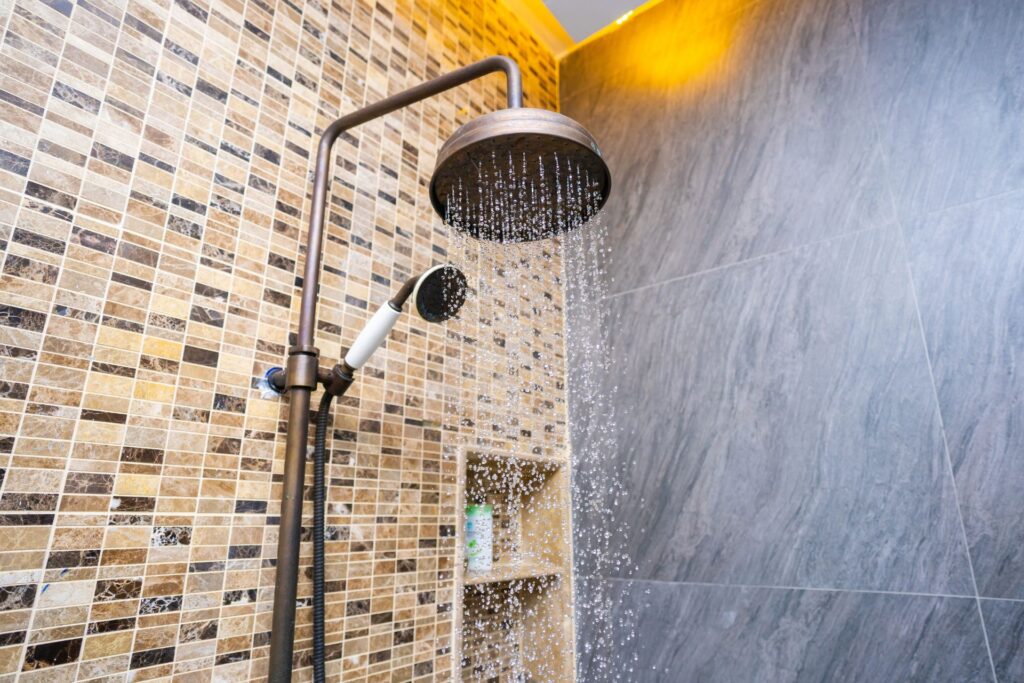
Signs Of Low Water Pressure In Your Shower
Have you ever stepped into the shower, looking forward to a refreshing experience, only to be greeted by a weak trickle of water? This can be a frustrating start to the day. But before you let this dampen your spirits, it’s essential to understand the signs of low water pressure in your shower and how it differs from other related issues. Knowing the nuances can help you address the problem more effectively and ensure that your morning routine is as rejuvenating as you deserve.
Recognizing Low Water Pressure
The most apparent sign of low water pressure is when the water flow from your showerhead is significantly weaker than usual. This isn’t just about a less satisfying shower experience; it can also extend the time it takes to rinse off soap and shampoo, potentially delaying your morning routine. But how can you tell if you’re dealing with genuine low water pressure or something else?
Consistency Across Fixtures: Check other water sources in your home, such as sinks and other showers. If they all exhibit similarly weak flows, this suggests a house-wide issue with low water pressure. However, if the problem is isolated to a single shower, the cause might be localized.
Water Pressure Gauge Test: For a more scientific approach, you can use a water pressure gauge to test the pressure in your home. Attach it to a hose bib and turn on the water to get a reading. Residential water pressure should typically be between 40 to 60 pounds per square inch (psi). Readings significantly lower than this range indicate a pressure issue.
Comparison Over Time: If you’ve noticed a gradual decrease in water pressure over time, it could signify a developing issue in your plumbing system, such as mineral build-up or leaks.
Differentiating Low Water Pressure From Other Issues
While low water pressure has its distinct signs, it’s crucial not to confuse it with other problems that can affect your shower experience. For example, clogged nozzles in your showerhead can mimic the effects of low water pressure by reducing the flow of water. Here’s how to tell the difference:
Inspect and Clean the Showerhead: Remove the showerhead and look for any mineral deposits or debris that might be blocking the nozzles. Soaking the showerhead in a vinegar solution can help dissolve these deposits and restore water flow.
Check for Kinks or Leaks: Sometimes, the issue isn’t with the water pressure but with the water being diverted or obstructed before it reaches your showerhead. Check the hose and pipes for any kinks, leaks, or obstructions that might be affecting the flow.
In summary, identifying low water pressure in your shower requires a bit of detective work. By understanding the signs and differentiating them from other related issues, you can take the first step toward solving the problem. Whether it’s a house-wide issue that requires a plumber’s expertise or a simple case of cleaning your showerhead, addressing low water pressure can dramatically improve your shower experience. Remember, the goal is to ensure your shower is a place of relaxation and rejuvenation, setting a positive tone for the rest of your day.

Common Culprits Behind Low Water Pressure In Showers
Experiencing low water pressure in your shower can be more than just an annoyance; it can be indicative of underlying issues in your home’s plumbing system. Let’s delve into the common reasons why you might be facing this problem and explore effective solutions.
Clogged Showerheads: The Sneaky Flow Disruptor
Mineral buildup within showerheads is a prevalent issue, especially in areas with hard water. Over time, minerals like calcium and magnesium accumulate, forming a stubborn blockade that restricts water flow. This not only decreases pressure but also affects the quality of your shower experience. Regular cleaning or investing in a water softener can mitigate this issue, ensuring a consistent flow.
Partially Closed Water Valves: The Overlooked Culprit
Water valves control the flow of water in your home, and if they’re not fully open, they can significantly reduce pressure. The main shutoff valve, located near the water meter, and the shower valve, often found in the bathroom, should be checked to ensure they’re entirely open. This simple adjustment can sometimes instantly restore water pressure to its optimal level.
Faulty Water Pressure Regulator: A Subtle Pressure Thief
Homes equipped with a water pressure regulator are designed to maintain a safe pressure level. However, if this regulator malfunctions, it can lead to a noticeable drop in shower pressure. Replacing or repairing the regulator, typically a job for a professional plumber, can restore balance and ensure your showers are satisfying once again.
Plumbing Leaks: The Hidden Pressure Predator
Leaks within your plumbing system not only waste water but also divert flow away from where it’s intended, including your shower. Identifying and repairing leaks is crucial for maintaining water pressure and preventing further damage to your home. Regular inspections can help catch these issues early on.
High Demand on the Water System: Timing Is Everything
Lastly, the timing of your showers can play a significant role in water pressure. During peak usage times, such as early mornings or evenings when many households are using water simultaneously, pressure can drop. Planning your showers during off-peak hours can help avoid this pressure pitfall.
In conclusion, tackling low water pressure in your shower starts with understanding the root cause. From simple fixes like cleaning your showerhead or adjusting a valve to more involved solutions involving plumbing repairs, addressing these issues promptly can rejuvenate your shower experience. Regular maintenance and being mindful of peak water usage times can also contribute to a consistently pleasant showering experience.
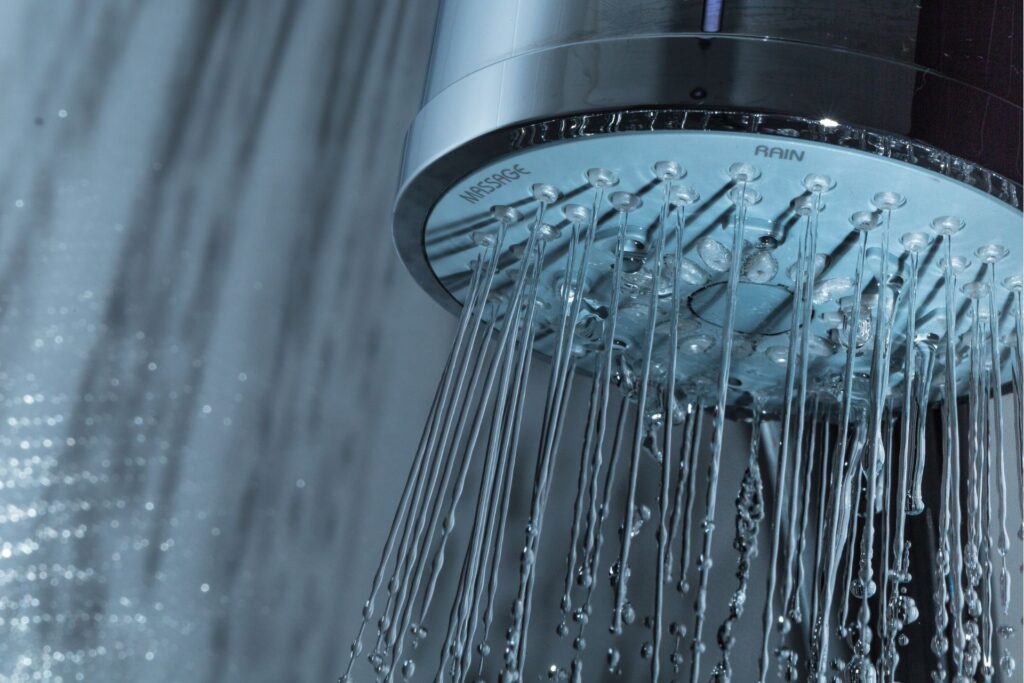
DIY Solutions To Increase Shower Water Pressure
Are you tired of dealing with a weak shower that barely trickles? You’re not alone. Many homeowners face this frustrating issue but fear not—there are several DIY solutions to boost your shower’s water pressure without calling in a professional. Whether it’s cleaning your showerhead, adjusting water valves, replacing faulty hardware, or even installing a pressure booster, we’ve got you covered. Let’s dive into these solutions, step by step.
How to Clean Your Showerhead Step by Step
Over time, mineral deposits can clog your showerhead, reducing water flow and pressure. Here’s a simple, effective way to clean it:
1. Remove the Showerhead: Unscrew it from the hose. If it’s fixed, you might need a wrench (wrap the showerhead in a cloth to prevent scratches).
2. Soak in Vinegar: Submerge the showerhead in white vinegar for at least 30 minutes (overnight is best for severe buildup).
3. Scrub Away Deposits: Use an old toothbrush to scrub away loosened deposits. For stubborn clogs, use a toothpick.
4. Rinse and Reinstall: Rinse the showerhead with water, reattach it, and enjoy increased water pressure.
Checking and Fully Opening Water Valves
Water valves control the flow to your shower. Sometimes, they’re not fully open:
Main Water Valve: Located where water enters your home. Ensure it’s fully open.
Shower Valve: Some showers have a dedicated valve (often in the bathroom or basement). Check and open it fully for maximum flow.
Replacing a Faulty Showerhead or Hose
A damaged showerhead or hose can significantly reduce water pressure:
Inspect for Damage: Look for visible signs of wear or damage.
Choose a Low-Flow Replacement: Modern “low-flow” showerheads are designed to provide good pressure while saving water.
Installation: Replace the old showerhead or hose by screwing the new one on. Use plumber’s tape if necessary to prevent leaks.
Installing a Water Pressure Booster Pump: An Overview
If the above solutions don’t suffice, consider a booster pump:
What It Does: A booster pump increases water pressure throughout your home, not just the shower.
Considerations: They can be pricey and require some plumbing knowledge. Research and select a pump suited to your home’s needs.
Installation: It’s possible to DIY, but given the complexity and cost, consulting with a professional might be wise.
Dealing with low water pressure in your shower can be a nuisance, but with these DIY solutions, you can improve your shower experience significantly. From simple fixes like cleaning your showerhead and adjusting valves to more involved solutions like replacing faulty parts or installing a booster pump, there’s a range of options to suit different needs and skill levels. Remember, regular maintenance and being proactive about minor issues can prevent them from escalating into bigger problems.
By addressing common issues with clear, step-by-step guidance and offering practical advice, this guide aims not only to solve immediate problems but also to empower homeowners with the knowledge to maintain and improve their home plumbing systems.

When To Call A Professional
In the realm of home maintenance and repairs, the DIY approach holds a certain allure. The satisfaction of solving problems with one’s own hands, coupled with the potential savings on service fees, makes DIY projects appealing. However, there are instances where the complexity, safety concerns, or the need for specialized tools and knowledge far exceed the capabilities of even the most enthusiastic DIYer. It’s in these moments that calling a professional is not just a choice but a necessity.
Recognizing Situations Where DIY Might Not Be Enough
The line between a manageable DIY project and one that requires professional intervention can sometimes be blurry. However, certain red flags should prompt you to consider seeking expert help:
Complexity Beyond Comfort: When the repair or maintenance task involves systems or structures you’re unfamiliar with, the risk of mistakes increases. Missteps can lead to more significant problems than the ones you’re trying to solve.
Safety Concerns: Electrical work, gas appliances, and major structural repairs carry inherent risks. The potential for harm or property damage in these areas necessitates a level of caution and expertise beyond the average homeowner’s scope.
Permit and Regulation Navigation: Many home improvement projects are subject to local building codes and require permits. Professionals are adept at navigating these regulations, ensuring that your project complies with local laws and standards.
The Benefits of Professional Diagnostics and Solutions
Opting for professional assistance brings with it a host of advantages that go beyond the immediate resolution of your issue:
Accuracy: Professionals bring a level of diagnostic precision that comes from years of experience and training. This accuracy ensures that the root cause of the problem is addressed, not just the symptoms.
Efficiency: Time is a scarce resource. Experts, with their honed skills and access to the right tools, can complete tasks more efficiently, saving you time and inconvenience.
Guarantees and Peace of Mind: Many professional services come with warranties or guarantees, offering you peace of mind knowing that if issues arise later, they’ll be addressed without additional out-of-pocket costs.
How a Plumber Can Increase Your Water Pressure
Low water pressure can transform simple tasks like showering or washing dishes into frustrating chores. While there are DIY remedies, such as cleaning aerators or checking for minor leaks, these solutions often address only the symptoms of underlying issues. A professional plumber can offer comprehensive solutions:
Systemic Diagnostics: A plumber can assess your entire plumbing system to identify the exact cause of low water pressure. This may involve checking for hidden leaks, evaluating the condition of pipes, or assessing the water source itself.
Pressure Regulator Adjustment or Replacement: Homes with a pressure regulator installed can experience low water pressure if the regulator fails or is improperly set. A plumber can adjust or replace this component to optimize water pressure.
Pipe Repair or Replacement: In cases where old, corroded pipes are restricting water flow, a plumber can replace or repair the affected sections, significantly improving water pressure.
While the allure of DIY projects lies in their perceived simplicity and cost-effectiveness, understanding when to call in a professional can save you time, money, and unnecessary hassle in the long run. From ensuring safety and compliance with local regulations to offering specialized knowledge and warranties, professional services provide value that DIY efforts often cannot match. When it comes to complex issues like increasing water pressure, the expertise of a plumber can offer not just a quick fix but a lasting solution.
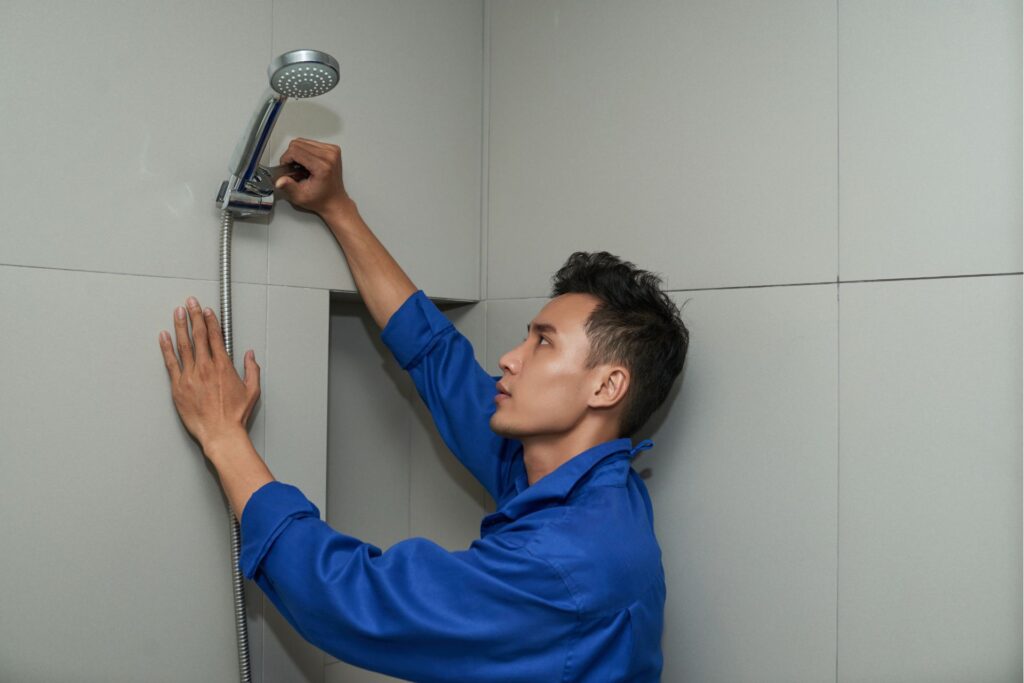
Preventing Future Water Pressure Issues
Dealing with low water pressure can be a frustrating experience, affecting everything from your morning shower to the efficiency of washing dishes. However, many homeowners are unaware that simple preventative measures can save them from these annoyances. In this detailed guide, we’ll delve into essential maintenance tips for your plumbing system, recommend water-softening solutions to combat mineral buildup, and explain how to monitor your home’s water pressure to ensure a steady, reliable flow.
Regular Maintenance Tips for Your Plumbing System
Stay Proactive with Inspections: A key to preventing water pressure issues is to regularly inspect your plumbing system. This doesn’t mean you need to become an expert plumber overnight. However, keeping an eye out for leaks, corrosion, or unusual noises in your pipes can alert you to potential problems early on. Scheduling an annual inspection with a professional plumber can also help catch issues you might miss.
Clean Your Aerators and Showerheads: Mineral buildup in aerators (the screw-on tip of a faucet) and showerheads is a common culprit behind low water pressure. Unscrew these fixtures periodically and soak them in vinegar to dissolve the buildup. This simple maintenance task can significantly improve water flow.
Be Mindful of Your Pipes’ Health: If your home is older, its pipes might be as well. Over time, pipes can corrode or get clogged with mineral deposits, restricting water flow. If you notice a significant and sudden drop in water pressure, it might be time to consult a professional about potentially replacing your pipes.
Recommendations for Water-Softening Solutions
Hard Water – A Silent Pressure Nemesis: Hard water, rich in minerals like calcium and magnesium, can lead to the buildup of deposits in your plumbing system, reducing water flow. Implementing a water-softening solution can mitigate these effects.
Invest in a Water Softener: A water softener can be an effective way to prevent mineral buildup in your pipes. These systems replace minerals like calcium and magnesium with sodium or potassium, softening the water and eliminating the main cause of buildup. Regular maintenance of your water softener is also essential to keep it functioning efficiently.
Explore Alternative Softening Methods: If a water softener isn’t an option, consider using a descaler or opting for a magnetic or electronic water treatment system. These can alter the properties of the minerals in hard water, reducing their ability to build up in pipes.
How to Monitor Your Home’s Water Pressure
Understand the Normal Pressure Range: Typically, home water pressure should be between 40 and 60 pounds per square inch (psi). Investing in a water pressure gauge, which you can attach to a hose bib, can help you monitor your home’s water pressure accurately.
Regular Monitoring: Check your water pressure regularly, especially if you’ve experienced fluctuations in the past. This can help you identify a problem before it becomes severe. If you notice a consistent drop in pressure, it might be time to investigate further or call a professional.
Adjust the Pressure Reducing Valve (PRV) If Necessary: Homes are often equipped with a PRV, which can be adjusted. If your water pressure is consistently too high or too low, adjusting the PRV can solve the problem. However, if you’re uncomfortable doing this yourself, it’s best to call a professional.
By implementing these preventative measures and solutions, you can significantly reduce the risk of water pressure issues in your home. Regular maintenance, being proactive about mineral buildup, and monitoring your water pressure are key steps in ensuring a steady and reliable water flow. Not only does this enhance your daily comfort and convenience, but it also contributes to the long-term health of your plumbing system.

FAQs: About How To Increase The Water Pressure Of Your Shower
Conclusion
Concluding our discussion on the critical issue of low water pressure in showers, it’s paramount to reiterate the significance of confronting this common yet frustrating problem head-on. Not only does it affect the quality of your daily routines, but it also speaks volumes about the overall health of your plumbing system. We’ve meticulously outlined a variety of solutions to tackle this challenge, from DIY fixes to more sophisticated approaches. However, if you find these suggestions daunting or if the problem persists, don’t hesitate to reach out to a plumbing professional who can diagnose and remedy the issue with precision. Ultimately, addressing low water pressure is not just about fixing a minor inconvenience; it’s about reclaiming the joy and efficiency of your shower experience, ensuring every day starts on a refreshing note. Embracing these solutions can lead to significant improvements in your water usage and personal comfort, making every shower not just a routine, but a revitalizing ritual.
Find A Professional Plumbing Company Near You
- Hot Water Cylinder Installation Auckland
- Hot Water Cylinder Installation Hamilton
- Hot Water Cylinder Installation Wellington
- Hot Water Cylinder Repairs Auckland
- Hot Water Cylinder Repairs Hamilton
- Local Plumbers Auckland
- Local Plumbers Hamilton
- Local Plumbers Whangarei
- Plumbers Wanganui
- Shower Installation Services Auckland
- Shower Installation Services Hamilton
About the Author:
Mike Veail is a recognized digital marketing expert with over 6 years of experience in helping tradespeople and small businesses thrive online. A former quantity surveyor, Mike combines deep industry knowledge with hands-on expertise in SEO and Google Ads. His marketing strategies are tailored to the specific needs of the trades sector, helping businesses increase visibility and generate more leads through proven, ethical methods.
Mike has successfully partnered with numerous companies, establishing a track record of delivering measurable results. His work has been featured across various platforms that showcase his expertise in lead generation and online marketing for the trades sector.
Learn more about Mike's experience and services at https://theleadguy.online or follow him on social media:

